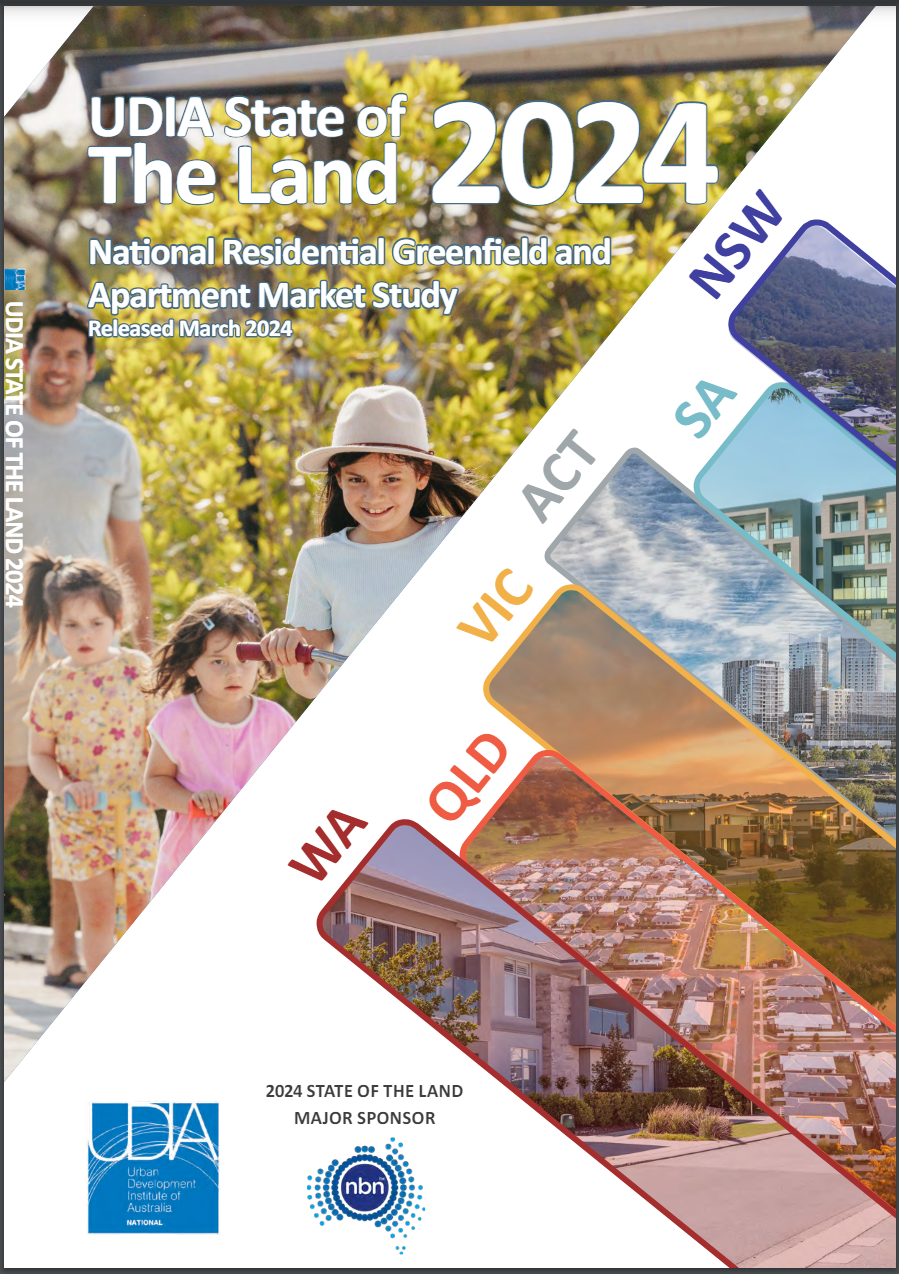The UDIA State of the Land 2024 Report launched today at the UDIA National Congress, reveals a story of mixed fortunes for the housing market and a warning for the near future.
Across the past two decades, Australia has significantly under delivered new dwelling supply across the nation. This undersupply has underpinned the on-going erosion of housing affordability. It has driven down homeownership rates and increasing household indebtedness.
“Without drastic change to boost housing, we are headed for a decade low supply that will push prices higher,” said Col Dutton, UDIA National President.
To date, recent greenfield detached housing supply has helped overcome chronic shortages in the multi-unit sector and this is propping up the market. The report however shows that in the next year, supply in both markets will fade and new dwelling supply in capital cities will fall to the lowest levels in over ten years.
Australia’s housing crisis will deepen over the year ahead as the New Residential Market Supply Pipeline continues to shrink. The accelerated drawdown of land supply during the housing stimulus during COVID-era continues to impact production volumes. This is being exacerbated by ongoing challenges in workforce capacity and development feasibility caused by persistently high construction costs.
New dwelling growth has consistently undershot population growth over the last 15 years, which has created a serious shortage of housing supply across all capital cities and it underpins the current rental and affordability crisis.
The national apartment and multi-unit sector recorded a further year of underwhelming performance which has seen overall completion activity plunge to historic lows, not seen since 2013.
The considerable lag time between new multi-unit approvals and completions means there will be a far longer recovery period for this sector than expected in the detached home market.
In summary, the strong recent performance of the national greenfield sector has helped buttress the persistent shortfalls in multi-unit supply. However with both the greenfield and multi-unit sectors set to experience dwindling output in the coming three years, supply of new homes in capital cities will decline to the lowest levels recorded in a decade.
“The UDIA State of the Land report provides insightful evidence that Government needs to focus policy on boosting development ready land supply. This is critical to any hopes of achieving the broadly held ambition to permanently ease housing affordability and thus improve the delivery of at market, affordable and social housing,” said Col Dutton.
We thank nbn Australia for their support as our major sponsor of the State of the Land Report. The full report can be found at this link the Headline Stats Pack can be found at this link
Quotes from Research Partners:
Colin Keane, Director Research 4
“The outlook for 2024, is for demand to continue to move back toward long running averages. This pathway may be defined by short periods of over selling and then under selling, but the trend should be upward. It is suggested that this ongoing improvement in demand will highlight more the issues around not having sufficient supply and effective levels of competition. Pricing pressure will increase, driven by rising costs associated with development and tight personal budgets. This tension will in part shift demand toward smaller land product and integrated housing options, but also run the risk of simply pricing people out of the market.”
Richard Temlett, National Executive Director, Charter Keck Cramer
“Conditions across Australia’s capital city apartment markets in early 2024 will be very similar to those of late 2023. In fact, it is going to take a lot more than interest rate cuts to stimulate the build to sell (BTS) and build to rent (BTR) apartment segments both ‘back to life’, but also to facilitate them to deliver the unprecedented quantum of apartments required to allow the Federal and State Governments to achieve the aspirational housing targets set out in their various housing statements.”
Eliza Owen, Head of Australian Research, CoreLogic
“This year, home values are expected to rise once again, but at a slower pace than what was seen in 2023, suggesting a continued normalisation of housing cycles following the extremities of the pandemic. As inflation is reigned in, the main tailwind for the Australian housing market will be a potential reduction in the cash rate, that could enable more prospective first home buyers to transition from the rental market to purchases. The construction industry will also have an opportunity to work down an elevated pipeline of projects, due to dwelling approvals falling, and construction costs steadying (albeit at high levels).”
–ends—

